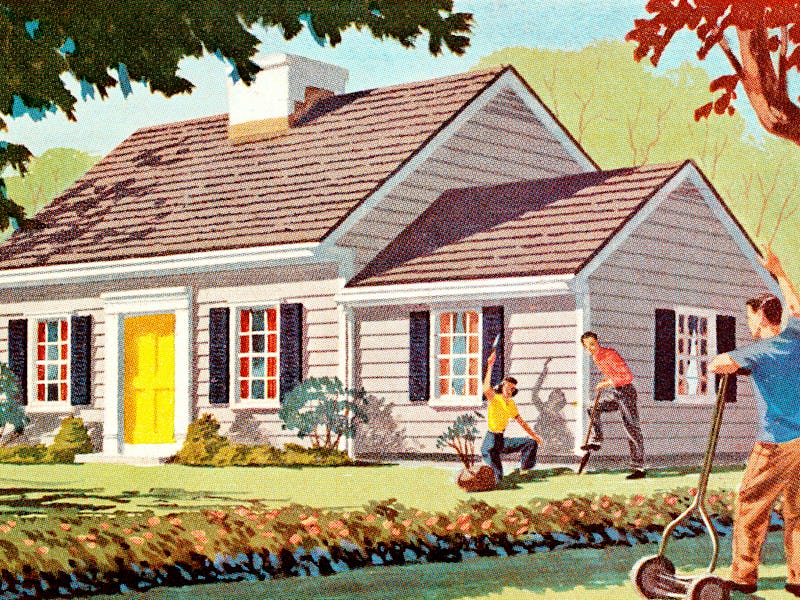Scientists find a surprising connection between nostalgia and pain relief
Fuzzy feelings about bygone days show up in an MRI.

Nostalgia is a powerful feeling, responsible for getting Frasier back on TV and creating a market for $100 Green Day tickets. Wistful sentimentality about the past can help protect one from the existential pain of a changing world. Now, there’s growing evidence that it dulls physical pain as well.
What’s New — In a study, published this month in the Journal of NeuroScience, participants in a lab experiment where slight heat was applied to their skin rated their pain as less severe if they viewed nostalgia-inducing images, such as candy, cartoons, and toys from the era of their childhood. The reminders of yesteryear also seemed to change activity levels in regions of the brain that scientists think are important to pain perception.
The authors, working at the University of the Chinese Academy of Sciences in Beijing, write that “[t]hese findings demonstrate the analgesic effect of nostalgia and, more importantly, shed light on its neural mechanism.”
Previous research has shown that being overtaken by warm thoughts of the past can reduce feelings of pain. In a set of 2020 studies, writing assignments meant to evoke nostalgia lowered levels of self-reported pain in both chronic pain sufferers and healthy individuals who experienced a lab-generated physical discomfort.
“However, the brain mechanism underlying the analgesic effect of nostalgia remains elusive,” the authors of the new study write. So they not only induced pain and nostalgia in subjects but put MRI headsets on them as well.
The thalamus may be the “central functional linkage” in nostalgia’s pain-killing effect.
Seeing photos of the bygone days “significantly reduced” self-reported feelings of pain in the subjects. Also, those participants experienced brain changes.
There was decreased activity in the left lingual gyrus and parahippocampal gyrus, parts of the brain that may be involved in the processing of pain, though more research is needed to better understand these connections.
The researchers also noted activity in the thalamus, a brain region that scientists think has a prominent role in modulating and regulating feelings of pain. Nostalgic imagery seemed to activate the anterior thalamus, a part involved in memory and learning, and then the posterior parietal thalamus, a part that collects sensory input from several channels, including pain receptors. This, the study authors write, suggests the thalamus may be the “central functional linkage” in nostalgia’s pain-killing effect
How they did it — Researchers recruited 34 people, between 18 to 25 years of age, with no particular sensitivity to pain.
The researchers outfitted the participants with an MRI headset to monitor brain activity and a contact heat-evoked potential stimulator, or CHEPS. This is a device, created for experiments like this one, with a metal surface that makes contact with the skin. Researchers can gradually make it hotter, increasing feelings of pain but not so much to seriously harm the participant. This group applied it with a band attached to the forearm.
The researchers picked images from childhood as they had been shown to be particularly nostalgia-inducing.
Participants were shown one of two sets of images on a projector. The first set consisted of photos from an era that this age cohort of Chinese citizens would associate with their childhoods, like a toy, chewing gum package, or cartoon from over a decade ago. The second set matched all of these, except they were from the present-day: a modern toy, gum package, cartoon character, etc. The picture sets were used in a previous experiment on nostalgia conducted in China.
As the images scrolled by, the heat generated by the CHEPS device increased. Participants continually rated their feeling of pain on a scale from 0 to 10. One was a feeling of warmth, two of heat, three of hotness, four of pain, and ten of the worst pain imaginable.
The group that saw nostalgic images, in addition to having different brain activity, rated their pain levels as lower than the ones that were shown photos of the present day.
What It Matters — Next time you have a headache, instead of an Advil, try some Avril, because nostalgia could be a tool for pain management. The study concludes:
These findings offer implications and perspectives for the further development and improvement of non-drug, psychological analgesia.
However, there are limitations. This study and others measured the power of nostalgia over a low level of pain, the kind allowed in an ethically reviewed lab study. The authors predict that “severe pain itself occupies more cognitive resources and therefore weakens the effect of nostalgia cues.”
What’s Next — The authors identified one question that is “essential” for future research: Does the pain-killing power of nostalgia hold up as the person ages further and further from the period recalled? From the study:
Another limitation is that we only examined participants within a limited age range. It is essential to investigate whether the analgesic effect changes with age to consider its potential clinical applications. The single-age group sample was insufficient, and repeated studies across generations would be helpful.
So somebody gather up photos of lava lamps, classic Ford Mustangs, and The Monkees and strap some CHEPS devices onto some Boomers.